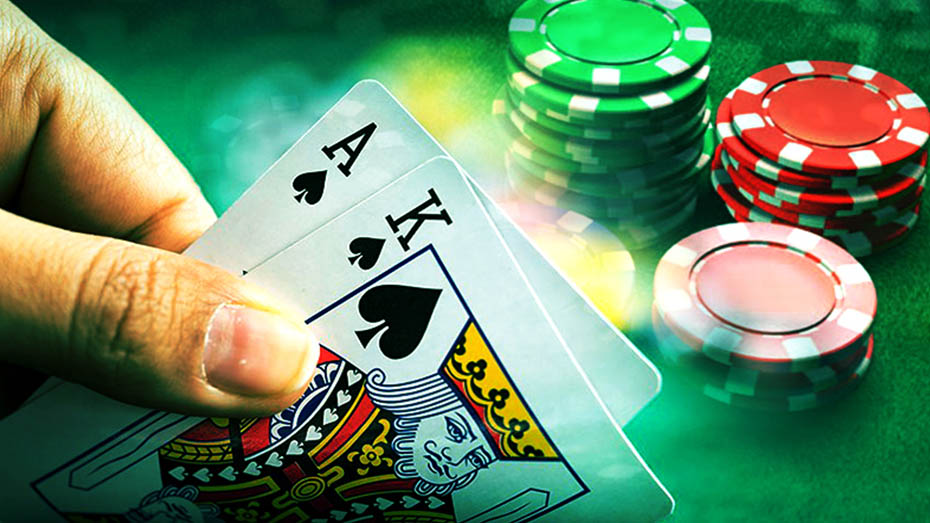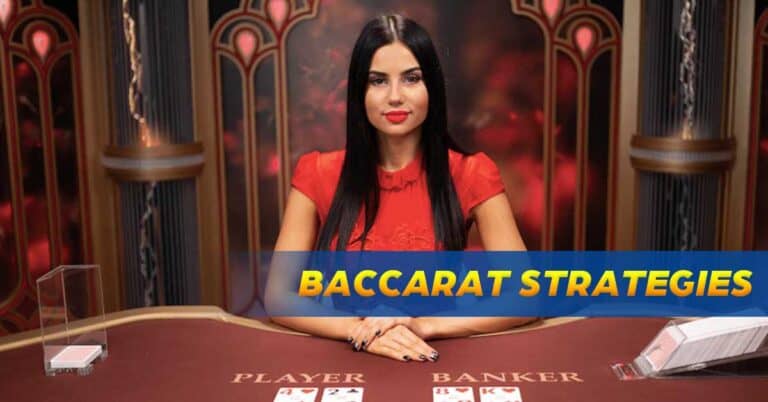Understanding Blackjack Odds, Probability, and House Edge
The odds of every game can be predicted to some level, which gives players better or worse chances of winning depending on how well they know the game. In Blackjack odds, they have the chance to get a better hand than the dealer and reach their goal. With the right plan and information, it is possible to win, but to do so, players need to know everything about the game. They can make better decisions at the table by using the odds and possibilities to better grasp how the game operates.

Decoding the House Edge
The foundation of a casino’s advantage over players lies in the concept of the “house edge.” This term signifies the percentage by which the casino has the upper hand over the player. Essentially, the house edge signifies the average profit the casino expects to make over an extended period of play based on all wagers placed. To grasp this better, consider it akin to the Return-to-Player (RTP) of a slot machine – the remainder of the payout not awarded to the player is amassed by the casino.

Illustrating this with an example: if a game boasts a house edge of 2%, it implies that for every ₱100 wagered, the casino anticipates making an average profit of ₱2 over prolonged gameplay.
Blackjack odds, in this context, emerges as the frontrunner with the smallest house edge, a mere 0.5% in favor of the house. Similarly, online Blackjack odds games offer some of the highest RTP percentages in the online gaming arena, with many surpassing the 99% mark.
The Basics of Blackjack Odds and Probability
Before delving further, it’s prudent to provide a concise explanation of odds and probabilities. Probability, a branch of mathematics, examines the likelihood of events – be they likely or unlikely – coming to pass. For Blackjack odds enthusiasts, probability acts as a compass to ascertain the odds of victory or defeat based on specific hands versus the dealer’s upcards.
Mathematically, probability is determined by dividing the count of favorable outcomes by the total possible outcomes. The resulting probability can be expressed as a percentage or a decimal fraction.

Consider a situation in which you want to estimate the likelihood of drawing a certain card from a freshly shuffled deck without the jokers. Each of the 52 cards in the deck has an equal chance of being drawn.
Let’s take the example of the Queen of Spades. With 1 out of 52 cards being the Queen of Spades, the probability of drawing it is 1/52, which equates to 0.0192 or 1.92%. Extending this to drawing any Queen from the deck, the likelihood stands at 4/52 or 7.369%, owing to the four Queens corresponding to each suit.
While odds and probability are interconnected, they are not synonymous, as some players mistakenly believe. “Odds for” denotes the ratio of successful outcomes to unsuccessful ones, while “odds against” signifies the reverse – the proportion of losses to victories.
For instance, the odds of drawing one of the four Queens from a full deck are 4:48 (4 to 48), while the odds against drawing a Queen are 48:4 (48 to 4), considering the presence of 48 other cards alongside the four Queens. The odds format aids in discerning the contrast between genuine odds and casino odds, which represent the payouts on winning wagers.
Navigating the Odds and Bust Potential for Blackjack Players

Similar to analyzing the dealer’s hand, a strategic approach can be applied to one’s own hand, focusing on the probability of success. The crux lies in minimizing the risk of going bust with an additional card. Here’s a helpful table to optimize your two-card hand:
| Player Hand Value | Odds of getting a Bust from a Hit |
|---|---|
| 11 and under | 0% |
| 12 | 31% |
| 13 | 39% |
| 14 | 56% |
| 15 | 58% |
| 16 | 62% |
| 17 | 69% |
| 18 | 77% |
| 19 | 85% |
| 20 | 92% |
| 21 | 100% |
The Dealer’s Odds in Blackjack
The dealer’s likelihood of triumph in Blackjack odds surpasses that of players, rooted in their second position and consequent decision-making advantage.

Nonetheless, the dealer’s odds hinge on the rules of the blackjack house. For instance, a dealer forced to stand on soft 17 is less likely to emerge victorious compared to one compelled to hit on soft 17.
The following table lays out the probability of the dealer going bust, subject to varying house rules.
Dealer’s Bust Probability
| Dealer’s card | Probability (Stand on 17) |
|---|---|
| Ace | 17% |
| 2 | 35% |
| 3 | 37% |
| 4 | 40% |
| 5 | 42% |
| 6 | 42% |
| 7 | 26% |
| 8 | 24% |
| 9 | 23% |
| 10 | 23% |
Influence of Deck Count on Blackjack Probabilities
The number of decks in play is a pivotal factor that shapes the house’s advantage, consequently affecting the prospects of basic strategy players. Counterintuitively, as the deck count rises, instances of successful actions like hitting Blackjack odds, splitting, or doubling down become diluted due to the augmented number of cards in play.
Consider the calculation for obtaining a blackjack from a fresh deck: it equates to the likelihood of drawing an ace multiplied by the probability of pulling a ten-value card. This product is then doubled to factor in all possible permutations – like ace-ten and ten-ace.

However, as cards are drawn from the deck, the total card count drops, thereby influencing the calculation. For instance, the probability of pulling an ace and a ten from a full deck stands at (4/52) x (16/51) x 2 = 0.04826. Extending this to eight decks yields (32/416) x (128/415) x 2 = 0.0474 – a minute difference, but one that accumulates over time.
This trend is mirrored in successful double-downs, where probabilities decrease in proportion to the introduction of more decks. Strikingly, the opposite holds true for being dealt a value of 20 with two ten-value cards – a rare occurrence that becomes scarcer with fewer decks. However, this affects both players and the house equally.
Playing the Long Game: Leveraging Favorable Odds
Veteran players understand that achieving sustained success hinges on a holistic, long-term perspective. The focus isn’t solely on individual hands but on consistent adherence to a chosen strategy. Just as a single drop of wine in a water-filled cup fails to alter the taste, a solitary incorrect move doesn’t condemn players to certain loss. Rather, it’s the cumulative impact of multiple actions that dictate the outcome.

To secure profits, players must align with the right strategy and adhere to it throughout the game. This approach preserves the odds in their favor, serving as a shield against hasty decisions arising from momentary setbacks.
Crunching the Numbers: Odds of Winning in Blackjack
The odds of triumph in Blackjack can soar as high as 42.22%. However, this figure doesn’t imply that the house prevails in 57.78% of instances. A third outcome – a push – disrupts this equilibrium. On average, 8.48% of Blackjack odds games culminate in a push, thereby reducing the odds of loss to 49.10%.

Yet, these odds aren’t cast in stone and can oscillate significantly. The variant of Blackjack, coupled with player and dealer rules coupled with personal playing styles, all factor into this equation. Players lacking a strategy, for instance, witness their odds plummet drastically.
For optimal odds and a confident grasp of when to hit or stand, cultivating a basic Blackjack strategy proves invaluable. Seek guidance from our Blackjack odds tips to fine-tune your decision-making, augmenting your odds of emerging victorious.
FAQs
Conclusion
In conclusion, grasping blackjack odds is a vital step for anyone looking to enhance their blackjack experience. With a solid understanding of probabilities and the right strategies in your arsenal, you’ll be better equipped to tackle the challenges of the game and potentially walk away as a winner. Elevate your gameplay today by incorporating the power of blackjack odds into your playing style.




















